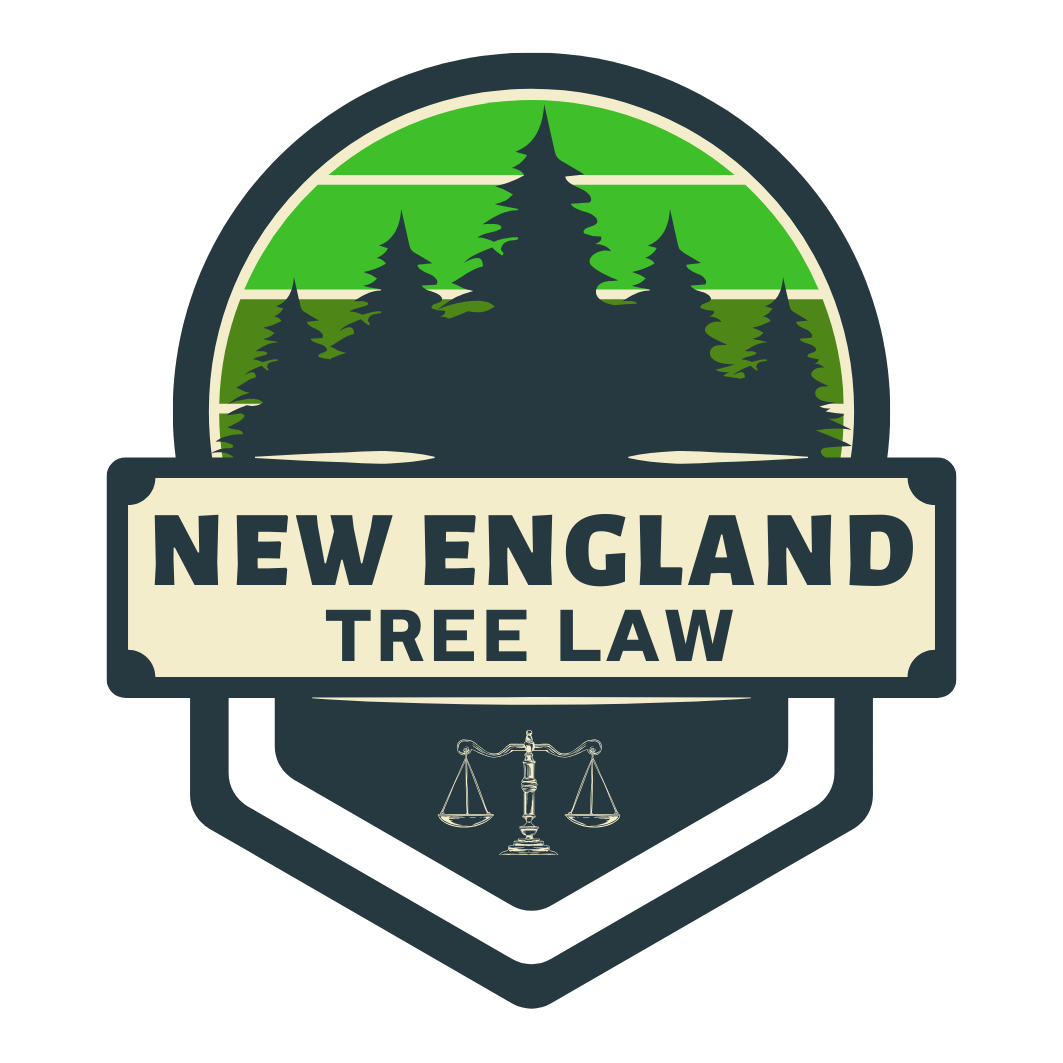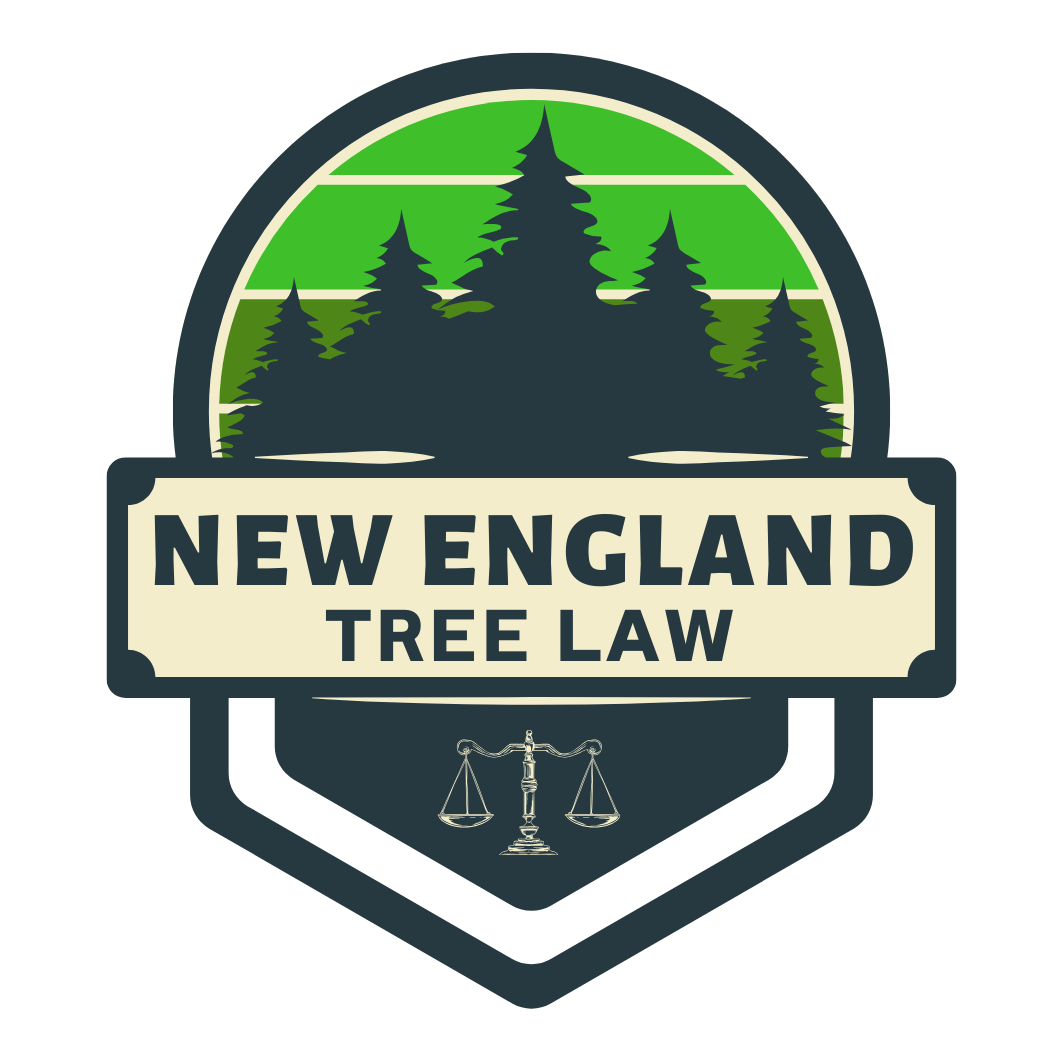
Learn about timber trespass and other tree law matters in New England
-

Maine
Learn about timber trespass lawsuits in Maine
-

New Hampshire
Learn about timber trespass in the Granite State
-

Vermont
Read about timber trespass law in Vermont
-

Massachusetts
Explore the timber trespass law in Massachusetts
-

Rhode Island
Learn about getting compensation for timber trespassing in Rhode Island
-

Connecticut
Read about how timber trespass claims work in Connecticut
FAQs
-
“Tree law” refers generally to the body of law that applies to trees, timber, branches, roots, and similar tree-related matters. Much of tree law derives from the “common law,” which is the body of judge-made law that began in England and has been developed over the centuries in the United States. Common law rules are based on court decisions over the years and vary from state to state. There are some uniform principles and general rules, but there can also be stark differences depending on the jurisdiction. This is especially true because case law involving trees is very sparse in some states and the precedent quite outdated. This has created a patchwork of tree law across the country that is sometimes very inconsistent.
-
Timber trespass is the term used to describe the unauthorized cutting of trees on someone else’s property. Timber trespass is a type of “tort,” meaning a civil wrong that causes injury to another.
Timber trespass can refer to a traditional timber “theft,” when the perpetrator intentionally cuts down trees or otherwise logs a property with the purpose of selling the timber for profit. It can also apply to the more common cutting of a neighbor’s tree in a residential setting. This type of timber trespass can occur intentionally, but more often is an accident caused by a mistaken understanding of the property line or a misunderstanding about the perpetrator’s authority to remove the tree.
-
A timber trespass statute is a type of state law that imposes civil penalties for those who commit timber trespasses. Not all states have timber trespass statutes. Arizona, for example, does not have a timber trespass statute, while Maine has one of the strongest timber trespass statutes in the nation.
Timber trespass statutes differ widely from state to state. Some merely create statutory cause of action for the wrongful cutting of trees, without additional penalties. Some, like Connecticut, only allow for damages based on the value of the trees for timber. Others, like Maine, specifically allow for restoration and replacement costs as a measure of damages.
Importantly, in most states the timber trespass statute is not a tree-cutting victim’s only remedy. The statutes are meant to supplement existing common law rights to sue for negligence and trespass. If trees are valued not for lumber but for aesthetic or ornamental value, a prudent plaintiff may need to advance a common law claim in addition to (or in lieu of) a statutory cause of action under a timber trespass statute.
-
The short answer: use our Tree Value Calculator for a quick approximation of the tree’s value.
The long answer: it depends. In most states, the threshold question is the location of the subject trees. If the trees were cut down in a vacant wooded lot where their only real use was for timber, courts may only allow a plaintiff to receive compensation for the “market” value of the trees as a commodity. This “market” value is also referred to as “stumpage” or “timber” value. Other states measure damages based on diminution of the real estate parcel’s property value caused by the timber trespass.
If a felled tree is on a residential lot, the measure of damages may be significantly higher than simply stumpage value. In many cases involving trees in residential settings, the trees are valued by their owners not for timber value but as a source of privacy, beauty, shade, or aesthetics. The trees may also be prized for their sentimental or ecological values.
Where a tree is valued not as a timber commodity but for some “personal” reason such as aesthetics or privacy, courts often allow replacement or restoration cost as a measure of damages. Essentially, a court will award sufficient monetary damages so that the tree owner can replace their destroyed trees and restore the land to its original condition.
For small trees that are cut down, restoration costs are relatively easy to calculate. A replacement tree of the same size and species can be located at a local tree nursery, and an estimate obtained for the cost to buy, plant, and maintain that tree.
The value of a large tree can pose more difficulty. This is because if a large tree of 30 or more feet is cut down, a similarly-sized replacement tree will not be readily available for purchase and replanting.
Thankfully, arborists have developed methods for placing values on large trees that cannot be directly replaced. The recognized method for calculating the value of large trees is by using the “Trunk Formula Method.” The Trunk Formula Method is an appraisal technique developed by the International Society of Arboriculture. It calculates the cost of a large tree by taking the per-square-inch cost of an available (smaller) replacement tree (referred to as the “unit cost”) and extrapolating the per-square-inch “unit cost” into the total area of the tree that was cut down.
Determining the “unit cost” of replacement trees in New England has been made considerably easier by the efforts of the New England chapter of the International Society of Arboriculture. The organization has published “unit costs” for most commonly-found trees in the New England area. A northern red oak tree, for example, has a “unit cost” of $68.29 per square inch.
Once the “unit cost” is established, the total cross-sectional “area” (or volume) of the tree that was cut down must be determined. This is calculated by squaring the diameter of the tree and multiplying by half of pi, or 0.785. The formula for trunk area is therefore expressed as: Trunk area = d2 x 0.785.
For example, if a northern red oak tree is cut down with a stump 20 inches in diameter, the total trunk area will equal 314 square inches (202 x 0.785). That total trunk area is then multiplied by the unit cost of $68.29 per square inch for a tree cost of $21,443.06. That basic tree cost can then be further adjusted in an appraisal to account for the tree’s location and condition, among other things.
The above are general rules. As the Rhode Island Supreme Court has recognized, “one person’s unsightly jungle may be another person's enchanted forest.” In other words, there are situations where a trespass into a heavily wooded lot could result in replacement cost damages rather than merely stumpage value, if the owner has a personal reason for having kept the land in its natural state. Additionally, courts sometimes impose overall reasonableness limits on replacement cost values – like the replacement damages for trees cannot exceed the overall value of the real estate parcel on which they resided.
Ultimately the value of a tree in a timber trespass case will vary from case to case and is very circumstance-specific. An experienced attorney should be able to explain these different considerations to you and help you value the trees or find a professional to assist with appraisal.
-
It depends on the state. Most states with timber trespass statutes – including all the New England states -- allow for a multiplier on damages, at least in certain cases.
New Hampshire, for example, mandates a 3-10 multiplier on timber trespass damages under the statute. Massachusetts, on the other hand, awards triple damages by default, but reduces to single damages if the defendant shows they had “good reason” to believe they had a right to cut the trees in question. Connecticut’s timber trespass statute similarly allows for treble damages unless the act was shown to be a “mistake.”
Maine’s timber trespass statute mandates double damages if the timber trespass was negligent, and triple damages if the timber trespass was intentional.
-
The first thing you should do is document the scene as much as possible. Take photos of the area from several angles. If there are stumps left from the felled trees, measure the diameter of the stumps with a tape measure and take photos of the measurement.
If you believe that your neighbor will somehow try to deny that they cut down the trees, it may not be a bad idea to report the matter to police. The police will likely consider the matter a civil issue, but even just a brief report about the allegations could be helpful document down the road.
It’s then a good idea to contact an attorney. An experienced timber trespass lawyer should be able to help you assemble your evidence, arrange for a valuation of the trees cut down, and present a claim for damages or lawsuit.
Many homeowners who have their trees cut down by neighbors feel their neighbors acted intentionally and in bad faith. Homeowners may even feel like their legal case is “better” because of the wantonness of the trespass.
That may be true in the academic sense, because intentional timber trespasses are often eligible for multiple damages under state statutes. But it can also be a double-edged sword. That is because a neighbor’s liability insurance (through their homeowner’s policy) typically would not provide coverage for intentional harm. Insurance covers only accidents, not intentional injury.
-
There are pros and cons to calling the police when a neighbor cuts down your trees without permission.
As a preliminary matter, you should understand that the police almost certainly are not going to do anything about the trespass even if you file a report. Police generally consider tree-cutting cases a “civil matter” and not a crime.
The benefit of calling the police is creating documentation of the situation. Hopefully, the police will at least agree to create an incident report, which would theoretically document the allegations against your neighbor.
There are drawbacks to filing a police report, however. The most important one to be aware about is that — if you want the possibility of liability insurance coverage — you should not allege that the neighbor acted knowingly or with malice. Your neighbor’s homeowners insurance will likely cover timber trespass claims that are the result of negligence or mistake. However, if the neighbor’s insurance determines that the neighbor knew the trees were on your property and cut them anyway, they could deny coverage.
I therefore usually advise clients to proceed with care in making allegations to the police. They could be talking themselves of a big insurance payout.
Whatever you decide, make sure you document the scene yourself with photographs as soon as you become aware of the situation.


